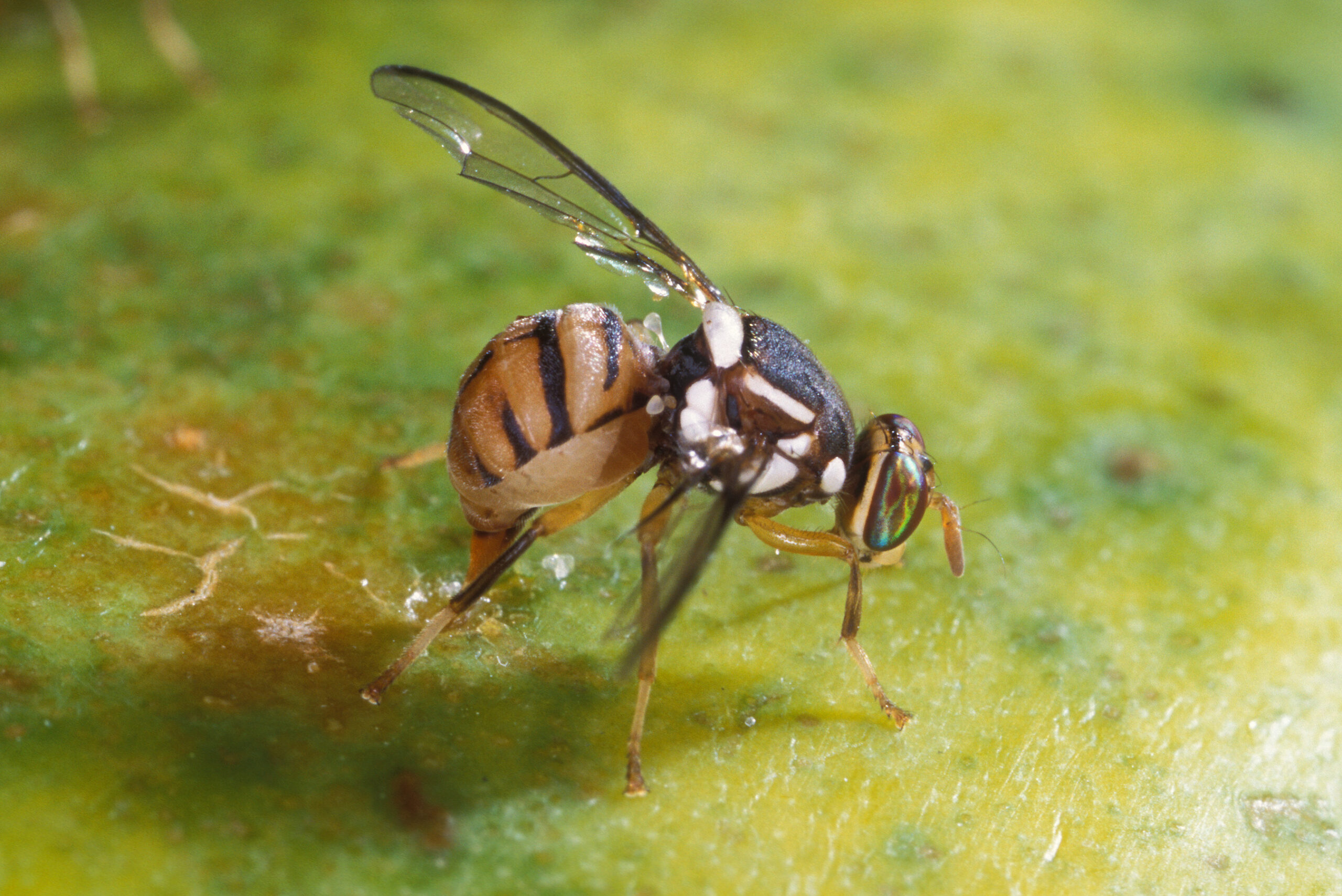About the Oriental fruit fly
25 January 2019

Oriental fruit fly (Bactrocera dorsalis) is an exotic pest with more than 300 hosts, including summerfruit, and wine and table grapes. In fact, most edible fruit is susceptible.
The pest would pose a major risk to a range of industries if it entered and became established in Australia as it can cause up to 100% of unprotected fruit to be lost.
The pest could cause major economic impacts, not only through production losses to its wide range of host crops, but also via restrictions on local trade and international market access.
What does it look like?
The adult Oriental fruit fly is similar in length to the common housefly (6 to 8 millimetres long), but is more slender.
Notable visual characteristics of the Oriental fruit fly include:
- a narrow brown band along the edge of its clear wings.
- a dark thorax (middle body section) with two prominent yellow stripes on top and yellow marks on each side.
- a yellowish abdomen or lower body part with a black T-shaped mark.
Female adults also have a tube with a fine tip that extends from the back end of the fly. This tube is known as
an ovipositor and is used to penetrate the host fruit or vegetable and deposit eggs inside. Oriental fruit flies can lay eggs in some fruit when in the hard, green stage.
Eggs are white, and banana shaped, measuring about 0.9×0.2mm. In the process of egg laying, bacteria that cause fruit to decay are also deposited. Within one to two days of being laid the eggs hatch into maggots, which feed on the fruit causing premature drop. The maggots are a creamy white colour, typically cylindrical in shape, and are up to 10mm long.
After the fruit drops to the ground, the maggots emerge and pupate in the soil, leaving holes in the fruit where they exited. Pupae are white to yellow-brown in colour and barrel shaped.
What can it be confused with?
Oriental fruit flies cause similar symptoms to endemic fruit flies such as Queensland fruit fly or Mediterranean fruit fly.
While there are some observable differences between the different types of fruit flies, ultimately an expert eye is usually needed to identify Oriental fruit flies under a microscope.
Any fruit flies that look a bit different from those regularly seen should be reported and further examined by an entomologist.
What should I look for?
The most obvious signs of infestation are small discoloured patches on the skin of the fruit, which develop from punctures or stings made by the female as she lays her eggs. There may also be black or brown marks caused by decomposition of fruit.
Infested young fruit becomes distorted, callused and usually drop, while mature fruit develop a water-soaked appearance.
You should also look for larvae feeding on suspect fruit, causing premature fruit drop. When only a few larvae develop, damage consists of an unsightly appearance and reduced marketability because of the egg laying punctures or tissue breakdown due to the decay.
Finally, it is important to note that considerable damage can occur inside the flesh before noticeable signs of infestation can be seen on the fruit.
How does it spread?
Adults can fly long distances and the transport of fruit infested with larvae can result in global movement of the pest.
Where is it now?
Oriental fruit fly is widespread throughout Africa and Asia. It is also found in Oceania in Papua New Guinea, Palau, Hawaii, Tahiti and on Christmas Island. It is currently not present in Australia.
How can I protect my farm from Oriental fruit fly?
It is important to check your property frequently for the presence of new pests and signs of unusual disease on plants. Become familiar with common pests of your crop, so you can tell if you see something different and report it.
Biosecurity manuals for the summerfruit and viticulture industries provide more specific information on what to do in orchards and vineyards to boost on-farm biosecurity. These manuals are available for free from the Farm Biosecurity website along with a range of other resources.
Report anything unusual to the Exotic Plant Pest Hotline on 1800 084 881.